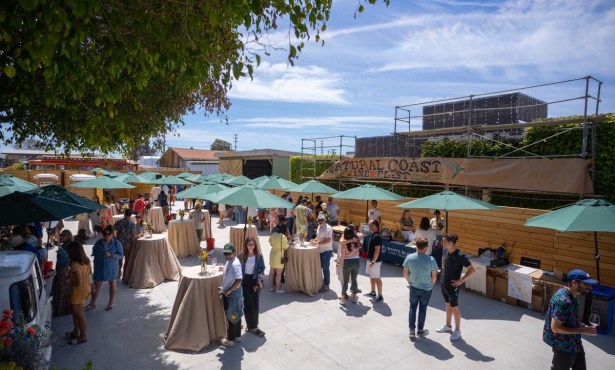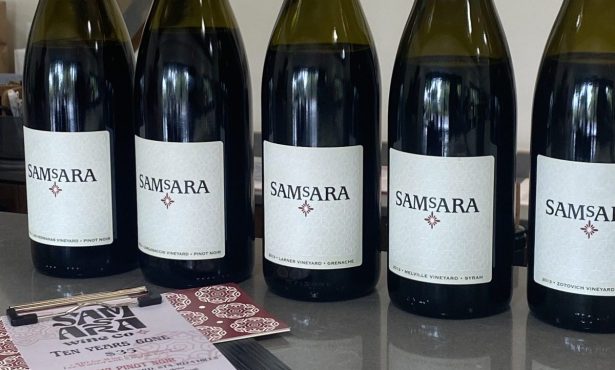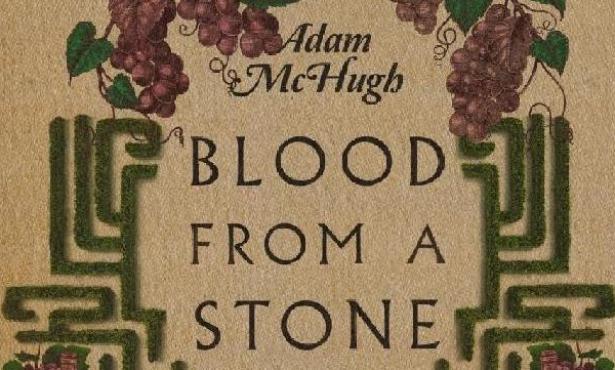Dueling Dierbergs, Obscure Italians, and Five Pinots
Report from First Ever Off-Campus Indy Office Wine Tasting

Though there’s a certain charm to trying wines in the confines of The Santa Barbara Independent’s conference room or in our blacktopped parking lot in the back, taking our sporadic series of tastings on the road for an off-campus excursion was a refreshing — and, dare I say, possibly permanent — change of pace. Last Friday, at the Westside Santa Barbara home of gracious host Tyler Tomblin (who is co-owner of Stagecoach Wine Tours), we ran through 10 wines with a collected cast of characters, including other wine industry folks, an avocado specialist, and a geologist. Here’s what we thought.
Dueling Dierbergs
Our tasting began with a mini-vertical of Dierberg Santa Maria Valley Chardonnays, the 2007 and 2009, and was a brief education in white wine ageing. See dierbergvineyard.com.
Dierberg Santa Maria Valley Chardonnay 2007: Though it does see a good amount of new oak, we were surprised that this remained on the pleasantly underoaked side of the chardonnay scale. Tasters said it was “citrusy,” that it’s nose reminded of “Apple Jacks” and “Fruit Stripe gum,” and that there was “grapefruit” throughout. ($32)
Dierberg Santa Maria Valley Chardonnay 2009: Compared to its older brother, this chardonnay proved “more savory” with noticeable “yeastiness,” a bit less apple, yet with some citrus and admirable “bitterness.” We wondered if the acidity would rise over time, or whether this would retain it’s same characteristics two years later. ($32)
Obscure Italians
Next up were three Italian wines, one a chianti from Tuscany that was named wine of the year for 2012 by Wine Enthusiast, and the other two were made from Umbrian varietals few of us had ever heard of: one an aromatic white called grechetto, the other a powerful red called sagrantino. See arnaldocaprai.it and frescobaldi.it.
Grecante Grechetto dei Colli Martani DOC 2009: All were immediately intrigued by this strikingly aromatic white wine, which reeked of a rich “dessert wine” somewhere between “candy, “honeysuckle,” and “elderflower.” But despite the whopping odor, the wine proved “soft,” “weak in the mid-palate,” and some even said “flat” on the tongue, though others complained that it was “syrupy” and “soapy.” About half the people enjoyed it for its uniqueness and contradictory nose/tongue presentations, and the other half were not so happy, preferring more familiar and less forward whites. ($18)
Nipozzano Riserva 2008: This “easy drinking” chianti with “pepper power” and a “sharp and quick finish” was judged to be “nice but forgettable” and “good for a party.” It was “lean” and “too smooth,” and probably would have been better served with some appropriate food to bring out the award-winning notes. ($20)
Sagrantino de Montelfalco Collepiano 2005: Easily the most intriguing wine of the whole tasting, the sagrantino — which is rumored to be a grape that was brought to Umbria by followers of St. Francis de Assisi in the Middle Ages and also boasts the most extractable polyphenols out of any red wine — proved to be “bold,” “chalky,” and “tannic” with hints of “spice and blackberry.” Said the geologist, “That’s my kind of red: spice, pepper, earth.” Said another taster, “It sucks the dryness out of your mouth, like a hot desert wind, but I like it a lot.” ($50)
Five Pinot Noirs
We finished up with five pinot noirs, featuring various regions and prices points. We did this part of the tasting blind, which resulted in a big surprise, in that the priciest wine was actually liked the least. That may have been an effect of tasty a meaty red before diving into delicate pinots, but we will never know.
Meiomi Central Coast (Sonoma, Monterey, Santa Barbara) 2010: The first pinot we tasted was pleasantly “chocolately,” but some felt it tasted more like “grape punch” or “Kool Aid.” One was more offended, calling it “musty butt.” ($18) See meiomiwine.com.
Pali Wine Co. “Riviera” Sonoma Coast 2010: Easily the best buy of the tasting was this screwtop creation out of the Lompoc-based winery, which is producing a bunch of pinots from all over the West Coast as well as a second label called Tower 15, with its own interesting list of red blends and white varietals like grenache blanc. Tasters thought the “Riviera” was “very impressive” for the price, offering a lot of “earthiness” for an affordable deal. ($20) See paliwineco.com.
Bergstrom Gregory Ranch, Oregon 2010: The biggest surprise of the afternoon was the reaction to the blind tasting of this wine, which probably needs a tad more time in the bottle, as most other Bergstroms tend to be considered some of the best pinots available. “If it was in a boxing class, it would be a lightweight,” said one taster, and most agreed that it seemed “thin,” “tart,” and a bit “barnyard”-like. There was a pleasing line of strawberry, but overall people were not particularly impressed. ($50) See bergstromwines.com.
Gainey Sta. Rita Hills 2009: A bit darker in color, this was another crowd-pleaser, with enough “pepper” and “spice” to “travel a little more” across the tongue. “Spicy up front, with a dark berry finish,” wrote one taster in his notes, with another simply opining, “Like it. Solid. Will buy.” ($30) See gaineyvineyard.com.
Picket Fence Russian River Valley 2010: Though hailing from a renowned pinot region, this grocery store brand had little chance of wooing us after so many tastes. Though everyone agreed it was very drinkable and “not offensive,” we also thought it was “flat,” “hollow,” and “one-dimensional” with “no structure.” ($18) See picketfencewine.com.



